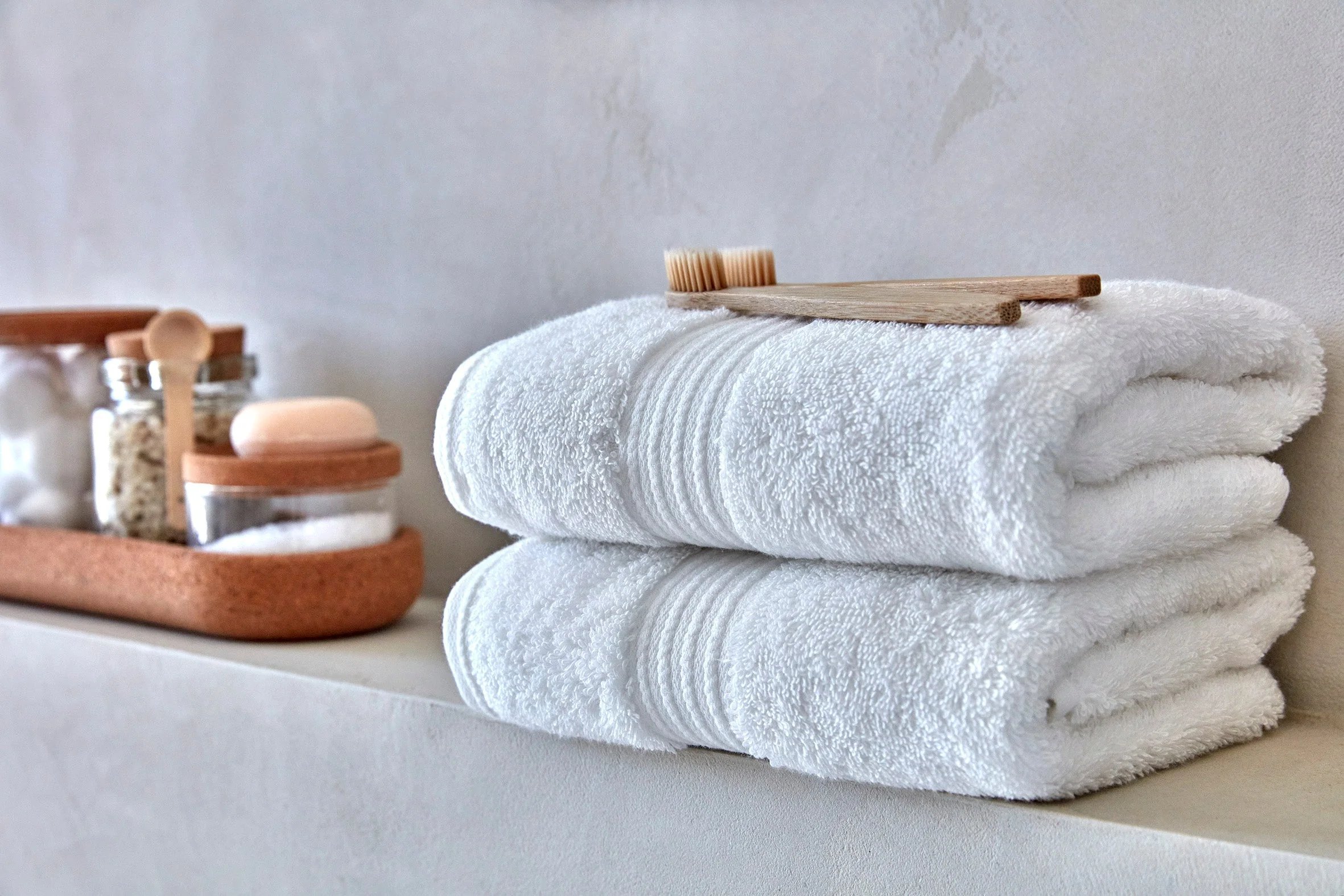The 15 Guidelines for Maintaining Towel Softness: The Key to Lasting Luxury
After a revitalizing shower or bath, nothing compares to the cozy embrace of a fluffy, soft towel. However, even the most expensive towels may eventually become stiff, lose their ability to absorb moisture, and develop an unappealing texture. The good news is that you can greatly extend the softness and absorbency of your towels by following a few professional tips and making thoughtful changes to your laundry routine. Maintaining their fibers is more important than simply cleaning them in order to keep that cloud-like feel throughout multiple washings.
1. The Inaugural Wash: A Crucial First Step
Before you ever wrap a new towel around yourself, give it a preliminary wash. New towels often come with silicon or wax coatings from the manufacturing process that can hinder absorbency and contribute to initial stiffness. A first wash helps to remove these residues, allowing the fibers to fully expand and become more absorbent from the get-go.
2. Detergent Discipline: Less is Often More
One of the leading culprits behind stiff, scratchy towels is detergent residue. When you use too much detergent, your washing machine’s rinse cycle struggles to completely flush it away. This leftover soap builds up on the towel fibers, making them feel rough and reducing their ability to absorb water effectively.
- Tip: Use only half the amount of detergent you think you need, or the amount recommended for a smaller load. For high-efficiency (HE) machines, which use less water, be especially mindful of detergent quantity.
3. Banish the Fabric Softener (Mostly)
This might sound counterintuitive, but conventional liquid fabric softeners and dryer sheets are the sworn enemies of towel longevity and softness. They contain silicones and other chemicals that coat the towel fibers, making them feel soft initially but actually reducing their absorbency over time and leading to stiffness.
- Tip: Skip fabric softener entirely for your towel loads. If you absolutely feel the need for softening, consider natural alternatives (covered below).
4. The Power Duo: Vinegar and Baking Soda
These common pantry staples are miracle workers for restoring towel softness and eliminating musty odors by stripping away accumulated detergent residue and mineral buildup.
- Vinegar Wash: Every few washes (or when towels start feeling stiff), run a cycle with 1 cup of white distilled vinegar added directly to the washing machine drum instead of detergent. Use warm or hot water. This helps break down residue and softens the fibers.
- Baking Soda Boost: In a separate cycle (do not mix vinegar and baking soda in the same wash as they can cancel each other out), add ½ cup of baking soda to the wash drum along with your reduced amount of regular detergent. Baking soda helps neutralize odors and naturally fluffs the fibers.
5. Sort Like with Like: Towels Only!
Resist the urge to throw towels in with your everyday laundry. Lint from other clothing items can transfer to your towels, making them feel rough.
- Tip: Dedicate separate wash loads just for towels. This also allows you to use optimal wash settings without worrying about damaging other fabrics.
6. Color Consciousness: Segregate Your Shades
Just like with any laundry, separating towels by color prevents dye transfer and helps maintain their vibrancy.
- Tip: Wash white towels together on a hotter setting to brighten them. Wash dark or brightly colored towels together on a warm setting to prevent fading.
7. Don’t Overload the Machine: Give Them Room to Breathe
Stuffing too many towels into your washing machine prevents them from getting thoroughly clean and rinsed. There isn’t enough space for water and detergent to circulate properly.
- Tip: Fill your washing machine drum no more than two-thirds to three-quarters full when washing towels. They need ample room to tumble, clean, and rinse effectively.
8. Optimal Water Temperature: Warm is Your Workhorse
While hot water is excellent for sanitizing and breaking down oils, using it excessively can degrade towel fibers over time.
- Tip: For most towel loads, a warm water setting (around 40°C / 104°F) is ideal. It’s effective at cleaning without being too harsh on the fabric. For white towels or those needing a deep clean, a hotter setting (up to 60°C / 140°F) can be used periodically, but not for every wash. Always check your towel’s care label.
9. The Power of an Extra Rinse Cycle
Sometimes, a standard rinse isn’t quite enough to eliminate all detergent residue, especially in older machines or with heavily soiled towels.
- Tip: If your washing machine has an “extra rinse” option, use it for your towel loads. This ensures all suds are thoroughly flushed away, contributing to greater softness.
10. Shake It Out: Before and After Washing
A simple but effective step. Shaking your towels helps to open up their fibers and prevent them from clumping together.
- Tip: Give each towel a good shake before putting it into the washing machine. Repeat this shake as you pull them from the washer before putting them into the dryer.
11. The Drying Game: Low Heat and Less Time
High heat is a major culprit for damaging towel fibers, making them stiff and brittle over time. Over-drying also strips away essential moisture, leading to a crunchy texture.
- Tip: Always dry towels on a low to medium heat setting. Remove them from the dryer when they are about 90-95% dry, still slightly damp to the touch. The residual heat will finish the drying process, leaving them softer.
12. Embrace Wool Dryer Balls
These reusable balls are fantastic natural softeners and an excellent alternative to dryer sheets. They agitate the towels in the dryer, helping to fluff the fibers and prevent them from clumping.
- Tip: Toss in 2-3 wool dryer balls with your towel load. They also help reduce drying time by improving air circulation.
13. Air Dry When Possible
If weather permits, line drying your towels outdoors can do wonders for their freshness and even contribute to their softness. The natural air and sunlight are excellent for eliminating odors.
- Tip: If you line dry, give them a good shake once dry, or toss them in the dryer on a cool, no-heat cycle for 5-10 minutes with dryer balls to fluff them up.
14. Store Properly: Give Them Space
Once dry, store towels in a way that allows their fibers to remain fluffy. Avoid tightly cramming them into linen closets.
- Tip: Fold towels loosely or roll them. Store them in an area with good air circulation to prevent musty smells.
15. Address Hard Water Issues
If you live in an area with hard water, mineral deposits (like calcium and magnesium) can build up in your towels, making them stiff and less absorbent.
- Tip: Consider using a water softener product designed for laundry, or incorporate a vinegar wash regularly (as described in Tip 4) to combat mineral buildup. Some detergents are also formulated for hard water.
By incorporating these expert tips into your laundry routine, you’ll find that your towels retain their inviting softness, absorbency, and luxurious feel for much longer. It’s a small investment in time and attention that pays dividends in daily comfort and satisfaction.



